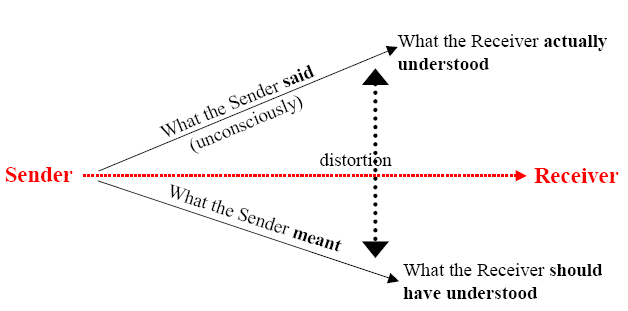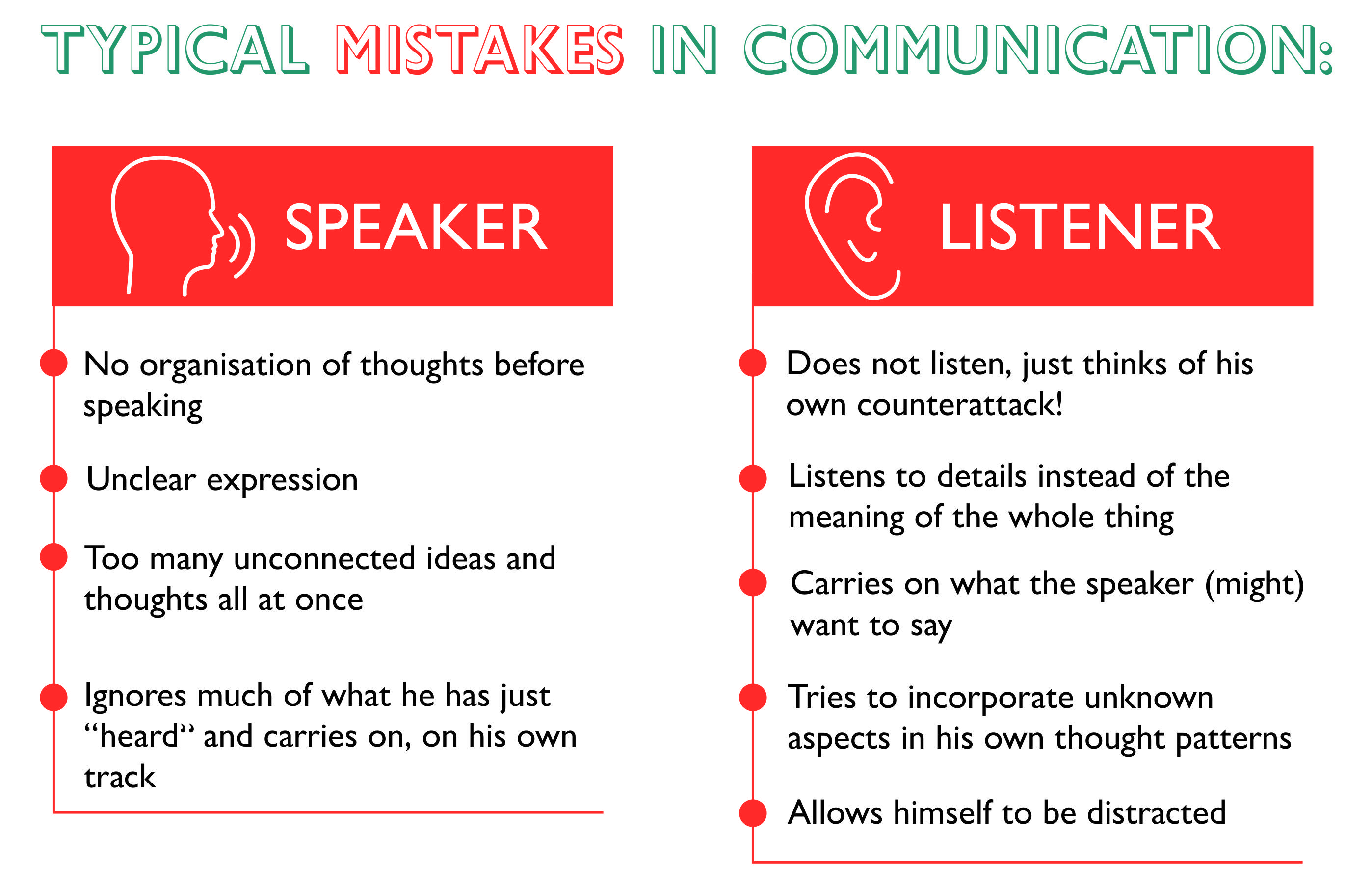People have different perceptions of what they see, and these different perceptions affect their understanding of the world and how it operates. In facilitation, facilitators generally work with people from different backgrounds, who have diverse experiences, and these often translate into different perceptions of the world and how it operates.
It is thus imperative that a facilitator’s communication is clear, explicit and unambiguous during the facilitation process.
Communication - Do We Understand Each Other
Click here to view a video that explains the what communication is?
When we communicate with each other we are almost always bound to misunderstand some message sent and received:

Don’t try and avoid the dangers of communicating by not communicating at all:
As Waszlawick said, “You cannot not communicate”. This has to do with the huge number of (unconscious) messages that the sender constantly gives off and packs around his words: tone, mimic, gesticulation. It also has a lot to do with the relationship and expectations the two people communicating with each other have towards each other.
Words are only part of the story:
- Only 7% of meaning is in the words spoken
- 38% of meaning is paralinguistic (the way that the words are said)
- 55% is in facial expression (source: Albert Mehrabian)
Four Ears and Tongues
Schulz von Thun developed a model to understand why the sender (speaker of the message) often does not say what he means and why the receiver (the person supposed to be listening to the message) can “hear” and therefore understand completely different things. He suggests that the sender speaks with four tongues and the receiver hears with four ears. The information is only transmitted on one tongue and enters only through one ear. The other messages conveyed are:
Appeal: What is the receiver supposed to do?
Relationship: What is the emotional and interdependency between.
Self-revelation: What does the sender let us know about him/herself.
If the wires get crossed, when the information the sender wants to transmit is understood by the receiver through his “relationship-ear” or “appeal-ear”; and the misunderstanding is almost bound to build up into a conflict.
A man and woman are driving the car through the town. The woman is driving. They drive up to the traffic lights and the man says, “The lights are red.”
The woman understands “STOP right NOW!” through her “appeal-ear” and brakes far more quicker than needed. She is annoyed at having been put under unnecessary pressure.
The woman understands, “My goodness woman, do I have to even drive the bloody car for you?” with her “relationship-ear” (they’ve been having some fights recently) and shouts back at the man, “Don’t you even think I can drive, you don’t respect me at all?”
This sort of reaction is normal and leads to lengthy disputes and sometimes an amazement on the side of the sender, whose information, he feels, has been misunderstood.
The facilitator of a group discussion must be aware of the dangers of not communicating clearly and of learners understanding the facilitator’s or other learners’ words in a completely different way than what is “meant”. He has to keep translating, formulating the words slightly differently (paraphrasing) and making sure he and the group as a whole have understood the same thing: “If I could just summarise and make sure I’ve understood you correctly…” or, through paraphrasing the sender, “So you are saying…”. It is your responsibility to ensure a common understanding among the learners who should become willing to speak and listen to the information and recognise when they are communicating speaking on different levels.
Typical Mistakes in Communication

